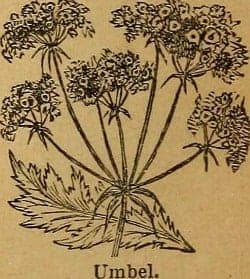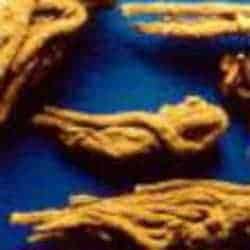This article follows Wild Edibles & Poisonous Plants of the Poison Ivy Family in a blog series on poisonous plants that began with 5 Poisonous Plant Families the Survivalist Should Know. The initial article outlined some basics of five major plant families with poisonous plants. The article on Poison Ivy included some basics on botany and plant names, in addition to the discussion of the Poison Ivy family. Here we will focus on Apiaceae.
SKIP AHEAD
Umbels & Aromatic Roots
Read Also: Medicinal Uses of Pine Trees
Apiaceae members also tend to have divided leaves. There are many technical terms used to describe leaves and their arrangements on plants. Plants in the Carrot Family tend to have leaves that are lacey or otherwise finely or not so finely divided. The leaves of Carrots and Parsley (another genus that is used to name the family) are characteristic. Celery is also in Apiaceae. It is a good example of another tendency in the family to have the visible vascular strands (“strings”) in the stem.
Categories of Plants in Apiaceae
As usual with nature, it is difficult organize Apiaceae by category since in reality there is much more of a spectrum (from delicious and nourishing to extremely toxic). Our human minds, however, like categories,
The primary categories of plants in Apiaceae are:
Edibles
Medicinals
Toxic Medicinals
Fatally Poisonous
These oversimplified categories are complicated by plants like Parsnip (Pastinaca sativa), which is a well-known edible (at least used to be), but also known to cause rashes in sensitive people upon contacting the leaves of the wild plants.
Edible Members of the Carrot Family
One of the world’s best-known vegetables is the Carrot, Daucus carota, which is the domestic variety of the Wild Carrot, which is also known as Queen-Anne’s-Lace. The root is usually much smaller than the domestic version, white in color, and quite fibrous, but it is indeed a Carrot.
Biscuit Roots (Lomatium spp.) were top foods of the northwest Natives. I have never tried them, but apparently their starchy roots are good food. The genus is certainly worth learning about for those living in the Northwest or travelling through (there are notable medicinal species as well), but there are concerns regarding population decline so learning about Biscuit Roots is more in preparation for emergency survival than for expanding your regular diet.
Bishop’s Weed (Aegopodium podagraria) is also known as Goutweed, for its medicinal effect. It is a common groundcover that was introduced from Europe. It often spreads “uncontrollably” in landscapes and can be found persisting on old home sites. It is cooked as a spring green, or potherb, when it can help rid the body of the uric acid build-up after a heavy meat diet in winter.
Though so many edibles and many culinary herbs belong to the Carrot (or Parsley) Family, you should approach this group with caution. As there are many poisonous species. Culinary herbs in the group include Parsley (Petroselenium crispum), Cilantro (Coriandrum sativum – the seed is Coriander), and Dill (Anethum graveolens).
Medicinal Members of the Carrot Family
Osha and its relatives (Ligusticum spp.) are top medicinals. A couple species are known to Chinese medicine and used extensively. Garden Lovage is well-known to the western world, though somewhat forgotten. And the Osha of the Rocky Mountains it one of our Nation’s most famous medicinals. In fact, Osha is one of the few herbs that I have come to depend on that is not available in the wild or even in the garden of my area. Osha grows in high elevations, usually over 9,000 feet. It has many medicinal uses but is best known as an antimicrobial for lung and respiratory infections. The Navajo call it Bear Root and consider it a cure-all for lung ailments. It works remarkably fast, especially if used at the onset of a cold. I like to chew the root or hold it in my cheek like chewing tobacco. Once, when harvesting Osha with a friend in Colorado just after he had harvested his honey, we filled jars with roots and topped them with the fresh honey. A very delicious way to take Osha indeed! The roots softened in the honey and were then easy to chew. Plus, the honey was infused with Osha.
Rattlesnake Masters (Eryngium spp.) have been used for snake bites and as an antidote to poisons.
Toxic Medicinals in the Carrot Family
Deadly Angelica (A. venenosa) has poisonous properties (as you might expect from the name), yet the Iroquois employed it in poultices in the treatment of injuries. Another, Poison Angelica (A. lineariloba) was used by the Paiute for pneumonia and spitting up of blood.
See Also: Tree Bark as an Emergency Food
Sanicle species (Sanicula spp.) have some toxic properties, or some toxic species belong to the genus. On the other hand, they were also used as poison antidote and for snake bites. They are also known as Snakeroots (like Echinacea and Black Cohosh, Cimicifuga or Actaea). It is not uncommon that snake bite remedies have some toxic properties.
Fatally Poisonous Members of the Carrot Family
The common name Hemlock is shared with the basically non-toxic member of the Pine Family. Herein lies the importance of scientific names. Mentioning Hemlock often causes eyes to open wide in surprise, so well known is Hemlock as a poison. When scientific names are used alongside the common, we can easily avoid confusion. Conium and Cicuta belong to Apiaceae, while Tsuga belongs to Pinaceae.






